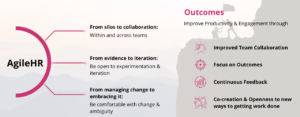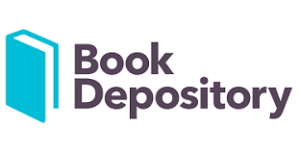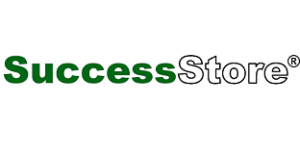In this article, we address the current unsustainable workload and expectations impacting HR professionals and departments in the changing world of work.
The Problem
It is such a common theme today. HR (and other functions) face overwhelming workloads, higher than ever expectations, and evolving demands as leaders and workforces adapt to a very different work and employment landscape. Research and our experience is showing that new ways of working (which for convenience we categorise as Adaptive or AgileHR) is proving to be an invaluable approach in alleviating HR work overload and overwhelm while also helping to manage increased expectations in this ever-evolving workplace. By adopting AgileHR principles and methodologies, which openly adopts ideas from agile, lean and design thinking, HR departments are effectively streamlining processes, prioritizing tasks, and responding to changing demands more efficiently.
One of the core tenets of AgileHR is iterative planning and task prioritization. Instead of being overwhelmed by an extensive and continually growing to-do list, HR teams work in short cycles or sprints, focusing with their customers on delivering the most critical tasks first. By breaking down larger projects into smaller, manageable pieces, HR can tackle challenges one step at a time, reducing the sense of overwhelm and improving overall productivity.
AgileHR’s focus on continuous improvement also plays a crucial role in dealing with work overload. Agile HR teams regularly evaluate their processes and outcomes, identifying areas for optimization and refinement and involving their stakeholder in workload prioritization. This iterative approach allows HR to learn from past experiences and adapt its strategies to become more efficient over time, ultimately reducing the burden of repetitive or unnecessary tasks. Furthermore, AgileHR embraces technology and automation where possible freeing up time for HR to focus on more strategic and value-added activities.
Its not just HR that benefits
AgileHR not only empowers HR departments to navigate the changing world of work more sustainably for itself, it also plays a pivotal role in enabling the entire organization to become more adaptive and responsive to market shifts. By adopting and role modelling agile principles and practices in such a visible domain as people and culture change, HR is leading as a catalyst for wider organizational agility, driving positive changes across the board.
One way AgileHR facilitates organizational adaptability is through its focus on cross-functional collaboration. By building dynamic, self-organizing teams and fostering open communication channels, HR encourages a culture of cooperation, co-ownership and knowledge sharing. This collaborative environment extends naturally beyond HR and permeates throughout the entire organization. As teams from different departments work more closely together on people and employee experience issues, they gain a deeper understanding of each other’s roles, challenges, and perspectives, leading to more effective problem-solving and decision-making.
For example, AgileHR’s emphasis on continuous feedback and iterative improvements extends to performance management and talent development. As HR embraces ongoing performance discussions rather than rigid annual reviews in an increasingly remote work setting, employees receive timely feedback on their work, allowing them to make real-time adjustments and continuously improve their performance. This iterative approach to employee development translates into a more adaptable and resilient workforce.

AgileHR’s focus on manager and employee empowerment and engagement also drives a sense of ownership and accountability among employees. When managers and employees feel valued and included in decision-making processes, they are more likely to proactively contribute ideas and solutions to address emerging challenges. This culture of empowerment and engagement fosters a greater sense of responsibility and accountability across the organization.
Additionally, AgileHR’s talent acquisition and management strategies enable HR to quickly respond to evolving business needs. By creating dynamic talent pools and flexible job roles, HR can efficiently work with the organization to allocate resources to address emerging projects and strategic priorities. This adaptability in workforce planning ensures that the organization has the right people with the right skills at the right time, enhancing overall agility and responsiveness.
There is really no other choice
In conclusion, AgileHR not only equips HR to thrive in the evolving world of work but also serves as a driving force in enabling the entire organization to become more agile through adaptive ways of working. By fostering cross-functional collaboration, continuous feedback, employee empowerment, and flexible talent management, AgileHR creates an organizational ecosystem that is more resilient, innovative, and capable of thriving in an ever-changing business landscape. As HR explores and embraces Agile practices with other early adopter functions such as IT, the rest of the organization is following suit, embracing adaptability as a habit and a fundamental pillar of ongoing market success. Ultimately, AgileHR ways of working empowers HR professionals to work more efficiently, deliver value more effectively, and cultivate a work environment that embraces change and continuous growth.
Increasingly this adaptive way of working is no longer a matter of choice, there is simply no other way to help not just busy HR departments to thrive but also those that they aim to serve.
WorkMatters provides AgileHR programmes, coaching and adaptive working solutions to help organisations and teams thrive in the changing world of work.
- AgileHR Programmes & Coaching – https://workmatters.ie/academy/agilehr/
- WorkMatters Hybrid / Smart Working Enablement – https://workmatters.ie/academy/hybrid-smart-working-enablement/
Some useful resources:
- Shaping the Future of HR – Dave Ulrich – https://workmatters.ie/shaping-the-future-of-hr-insights-and-a-discussion-with-dave-ulrich/
- Webinar: AgileHR and why it matters – https://shorturl.at/giyW5
- AgileHR – fad or fact? – https://disrupthr.ie/kevin-empey-at-disrupthr/
- The future of work is here: What does ‘good’ look like? – https://www.hrdconnect.com/2023/05/23/the-future-of-work-is-here-what-does-good-look-like/








